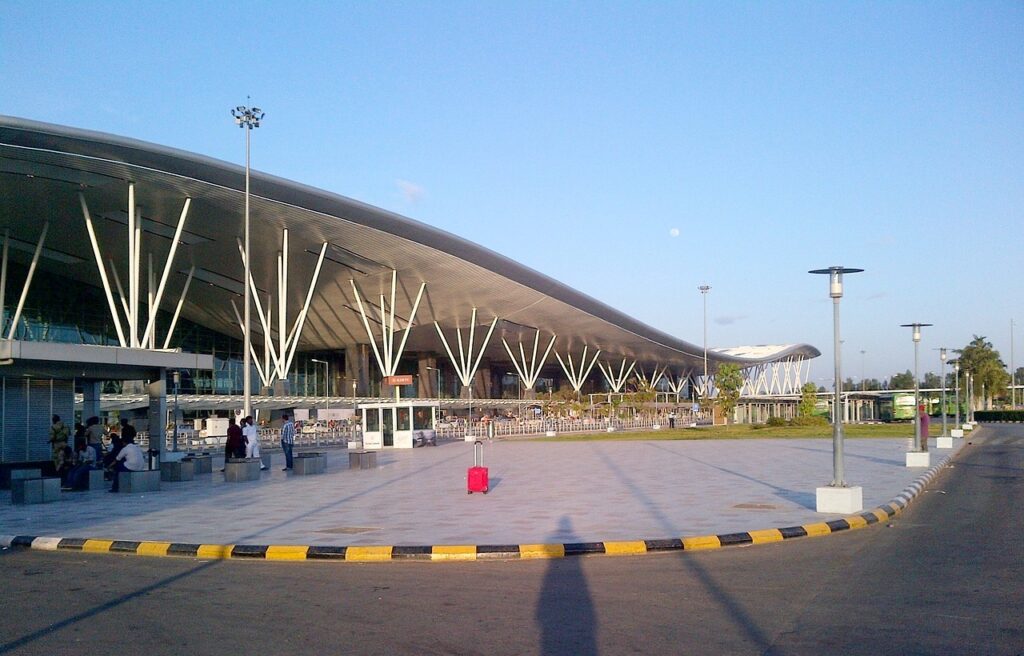Lalbagh Botanical Garden is a well-known and stunning garden located in southern Bengaluru. This garden is spread over 40 acres of land and was originated by Hyder Ali, the famous ruler of Old Mysore. Initially, it was designed based on the Mughal style in the year 1760, but later Hyder Ali’s son Tipu Sultan rebuilt it with a new style and gave it a stunning look. He imported many flowers from Persia, France, and Afghanistan to boost the look of the garden. After that many Indian rulers changed the look of the garden and finally it was taken over by the horticulture department which added other areas to the garden.
Lalbagh Botanical Garden Mavalli Bengaluru Karnataka
The tremendous colors of trees and plants in the Lalbagh Botanical Garden always attract domestic and international tourists. Many British empires have contributed a lot in designing and developing the areas of Lalbagh Botanical Garden. This Garden is now handed over to the Agriculture Department of Karnataka.
The Lalbagh Botanical Garden got this status in 1856. This garden is Internationally accepted and renowned garden for different plant species and colors. The Lal Bagh Botanical Garden is located at the center of the city with all types of facilities available. So mostly known as paradise in Bangalore.
Lalbagh Botanical Garden has an inside glass house, which was proposed by John Cameron, who at that time was Superintendent of the Gardens. This Glass House modeled on the style of London Crystal Palace, is mostly used for flower shows every year.
How can we reach Lalbagh Botanical Garden?
By Air
The nearest airport to the Lalbagh Garden is the Kempegowda International Airport. It is nearly 37 km from the garden. Many cab companies give you access to book the cabs online.
By Bus
The Kempegowda Majestic bus station is the nearest one to the Lalbagh Botanical Garden. Botanical Garden Bus Stand is a local bus stop and access to many other people around the area is given but the buses are limited. The nearest large bus stand is the ShantiNagar bus stand.
By Train
The Mysuru railway station is the nearest railway station to the Garden. Malleswaram railway station provides limited connectivity so it is less used.
Lal Bagh Botanical Garden is the hidden GEM in Karnataka.
- The Lalbagh Botanical Garden is a great and attractive tourist sight with flowers all around.
- The renowned Glass House is inside the Garden and attracts tourists from all over the world.
- Lal Bagh Lake, which is famous locally and internationally.
- The Dr. M.H. Marigowda Horticulture Library has a lot of collections of literature on horticulture.
- Health-conscious individuals can maximize their active lifestyle while enjoying the garden’s pure, fresh air.
- The garden contains four gates; through the west-end gate, you can enter. The southern gate is the primary gate to the Garden. The northern gate, which also provides an exit, is also the right way to reach the glasshouse, and last the eastern gate is near Jayanagar city.
Recommended activities.
Some people are affectionate about traveling and exploring new things day by day. The Lalbagh Botanical Garden is a great place for those people.
Interesting facts about Lalbagh Botanical Garden
- The Lalbagh Botanical Garden design is initially given by the Mughal empires.
- The flower show which is also an attraction for tourists these days was started by Members of the Mysore Horticulture Society 100 years ago.
- Lal Bagh received the status as the designation of Government Botanical Garden in 1856. It is well-known throughout the world for its botanical artwork, scientific plant research, and plant conservation.
- The glass house inside the garden was developed by John Cameron in 1874, it is modeled like the Crystal Palace of London.
- The Garden contains a Peninsular Gneiss rock which is said to be as 3000 million years old. There is a small monument constructed on the rock which has won the recognition of a National Geological Monument.
Connect with us on Instagram
Bonsai Garden in Lalbagh Botanical Garden.
As we have discussed everything about the garden, it is also an interesting collection of 70+ bonsai Trees. These trees are said to be 20 to 80 years old. These huge plants provide shade to lakhs of tourists in the summer season.
Entry to Lalbagh Botanical Garden.
For the people who love to remain for and do jogging in the morning, They are allowed to enter free to the gardens from 6:00 AM to 9:00 AM and 6:00 PM to 7:00 PM. Moreover, children and the disabled are free all day long. An hour-long guided tour ride costs 100 INR per person. Visitors were enthralled by the Lalbagh Botanical Gardens’ breathtaking scenery. Enjoy the beauty of nature by taking long walks in the nursery, sitting by the lake, or taking in the view from the hills!
Also Read
Savour Dosas and Waffles at These 12 Best Breakfast Places in Bangalore
Things to do at Lalbagh
This area is called the home of numerous bird species. As they start their journey in the morning, the garden provides a mesmerizing view at that time. Birds like Myna, Parakeets, Crows, Brahminy Kite, Pond Heron, Common Egret, Kingfisher, Spotted Owlets, Spotted kite, Spotted Pelican, Ducks, Indian Cormorant, and Purple Moor Hen can all be photographed by interested photographers who are ready to show off their photographic capabilities. Additionally, uncommon plant species from Afghanistan, France, and Persia are available to tourists. Lal Bagh Botanical Garden is totally pleasing and contains lovely lawns, flowerbeds, lotus pools, and fountains. The irrigation system is fully functional and the best one in the country.
Treasure of plants at its finest
The Lal Bagh Botanical Garden, which has tremendous vegetation, is a full delight for tourists across the world. Furthermore, the enchanted garden has 1854 different species and 673 genera of plants. Some of the plant species in the Lalbagh Botanical Garden are Agathis sp., Amherstia nobilis, Araucaria sp., Averrhoa bilimbi, Bambusa sp., Bixa Orellana, Brownea grandnieces, Castanospermum australe, Cola acuminata, Corypha umbraculifera, Couroupita guianensis, Cupressus sp., Eriobotrya japonica, Magnolia sp., and Swietenia mahagoni, etc.




